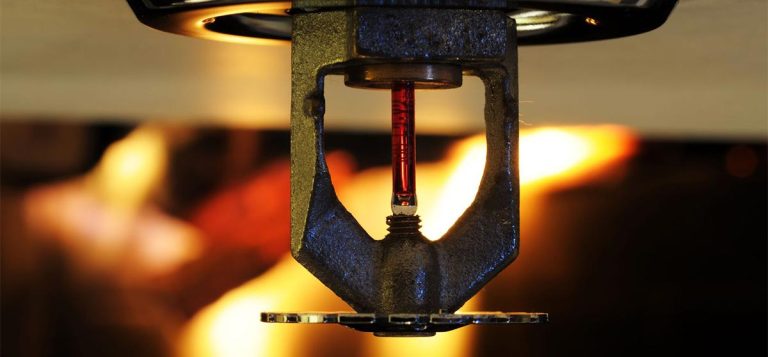Mastic asphalt is a “highly relevant” building material for today, industry movers and shakers were advised at a lunch event hosted by the Mastic Asphalt Council (MAC) to celebrate the use of the product in modern construction. Green architect and TV presenter Charlie Luxton spoke to more than 40 architects and contractors in the crypt of St Paul’s Cathedral where mastic asphalt was used on the refurbishment of the dome gallery. At the event he told the audience he was using mastic asphalt on the construction of his own home. Specifically on the build of a complex stair detail where the stairs descend through a flower bed. Mastic asphalt was used to form stairs, upstands, sumps and drainage outlets – a “hugely complex 3D object,” according to Charlie. “This is what mastic asphalt can offer – waterproofing, a durable surface, even a decorative finish,” he said. “In some ways mastic asphalt might be perceived as an old fashioned building material. But there is a reason it has been around so long. Many of you probably don’t even think about it as relevant to you in modern practice but like many long-lasting, tried and tested materials it is being re-imagined and modified and re-examined as a highly relevant building material for today.” When introduced by MAC chairman Keith Collins, Charlie admitted: “When asked to do this talk I was relieved because sometimes I’m asked to talk on things I know nothing about, and more importantly have no opinion about. But in this case I am a paid-up member of the mastic asphalt fan club.” Building his own house has become a journey to embrace re-imagined older materials. “Increasingly as I detail my buildings I am looking always for the most robust way of achieving beautiful finishes. Mastic asphalt is tough, with a long life span, and repairable. If the integrity of the covering is compromised or if you want alter and make changes to the building over time you can easily repair with it and this makes it eminently suitable for the realities of building,” said Charlie. At the event, Charlie referred to the environmental credentials of mastic asphalt. “Mastic asphalt is 100% recyclable and inherently efficient to install. It has been an eye opener on my build recently. The mastic asphalt guys used what they needed and took back what they didn’t, to reheat and reuse. No waste at all. Many alternative materials such as complex multi-layered roof membranes can be incredibly difficult to recycle and this is not likely to change anytime soon. We need to reduce waste first. Waste during build is hard to control but waste before installation is a huge issue too, with 10% of materials coming to building sites leaving in a skip,” he said. Guests at the MAC lunch were advised by Charlie to try to use more simple, less refined, inert products like wood fibres, lime and timber. “Because well-installed, you know deep down they will last hundreds of years. For me, mastic asphalt sits right up with that group of materials. It is very inert and through the work that MAC and the industry has done, carbon neutral. All of which is a huge achievement.” Passionate about sustainable architecture since he was a fresh-faced student in the early 90s, Charlie said urban areas, suburbia and gardens are all oases of bio-diversity and to support this green roofs played a huge role. “I used to be sniffy about green roofs in the countryside but increasingly we are looking at their role to provide habitat. In towns they reduce the heat island effect, reduce particulates and provide much-needed wildlife refuges as well as reduce solar gain and control temperature fluctuation through the thermal mass they can provide. “The big issue with green roofs is longevity and robust construction. Mastic asphalt with its longevity and robust nature is a great material for these green roofs. Buried under a few hundred millimeters of soil the life span of mastic should be impressive.” Guests at the MAC lunch were also treated to Charlie’s personal take on skills shortages. “The big issue is getting people who know how to install systems and materials well, whether it be MVHR, EDPM or tape and fill plasterboard. In principle they are all good but installed wrong they become a huge problem. “I am increasingly aware of just how much time site issues can cost a practice. You can be very disciplined and smart through the design stage, planning, detailing and 95% of construction just to lose your hard-won profit when an installation goes wrong and you get into the quagmire of the blame game. “Specifying robust materials that have a guaranteed level of craft from the people fitting them, especially when it comes to roofs, can be invaluable. Watching the team install the mastic asphalt on my own build was fascinating. Seeing 15-20 mm of the black stuff going down and being sculpted into a stair and upstand was incredible.” And on value-engineering. “It’s about accepting that buildings have to last a long time. We need to be thinking about finishes that last 100 years, not 20. To need minimum maintenance over the long term. Clearly this has a cost implication but to fully understand this we need to think in terms of life cycle cost not just installation cost. And the life cycle cost of mastic asphalt is much lower than its competitors.” As well as its robustness and longevity, Charlie said he also specified mastic asphalt for his own home for its versatility. “It’s a material that can be a roof finish, a floor finish, deal with the complexities of stairs, is robust enough to be the stair finish itself, even in my case if just while construction is in process, and can then take a screw being dropped on it and trampled into the surface again, again







